A Guide To The Tulja Bhavani Temple: The Abode Of The Warrior Goddess
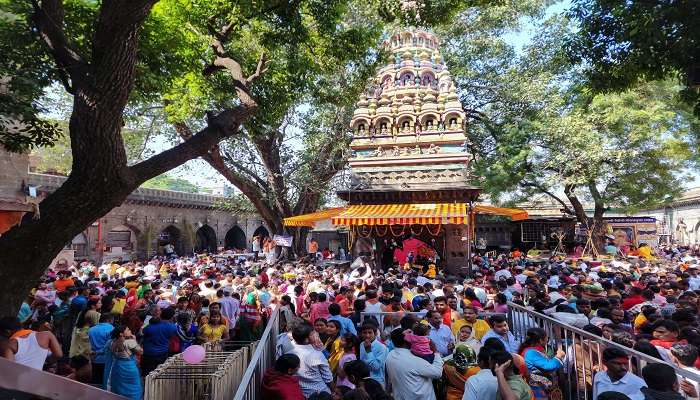
The Tulja Bhavani Temple is a radiant beacon of faith, nestled amidst the Sahyadri hills in Maharashtra, India. It is a pilgrimage site of immense significance. The temple is dedicated to Goddess Bhavani, a form of Durga. Since its establishment, the Tulja Bhavani temple has stood as a symbol of faith and spiritual fervour. It has a rich history and extreme religious significance that draws thousands of devotees every year. If you want to unravel the mysteries of faith and the divine aura of the Tulja Bhavani temple, dive deep into the details.
History And Mythology
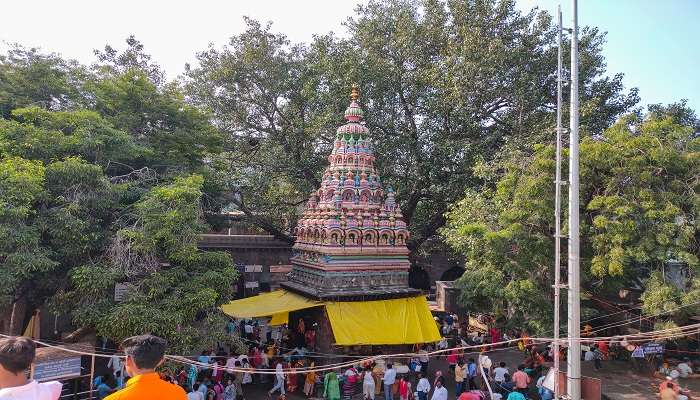
Tulja Bhavani Temple history is shrouded in mystery, myths, and legends. The most commonly believed tale behind history dates back to the 12th century CE. According to legends, a fearsome demon named Kukura harmed the region where the temple now resides.
Anubhuthi, a pious Brahmin, sought refuge from the goddess Bhavani, who emerged victorious in a fierce battle against the demon. However, according to mythology experts, tales suggest that Anubhuthi conducted a penance for Goddess Bhavani following the demise of her husband. She aimed to ensure her baby was safe from the torture of the demon. Satisfied with the devotion and sacrificial nature of Anubhuti, Goddess Bhavani chose to reside on the hillock where the temple now stands. It was her way of ensuring the ultimate protection for all her devotees.
Furthermore, there is a history associated with the construction of the temple. Some historians and legends claim that Goddess Bhavani appeared in Chhatrapati Shivaji’s dream and instructed him to build a temple in her honour. Chhatrapati Shivaji, who was already a devout devotee of the Goddess, not only built the temple but also used to offer his sword before embarking on his war conquests. This further solidified the association of the temple with victory.
Must Read: Things To Do In Lonavala
Best Time To Visit
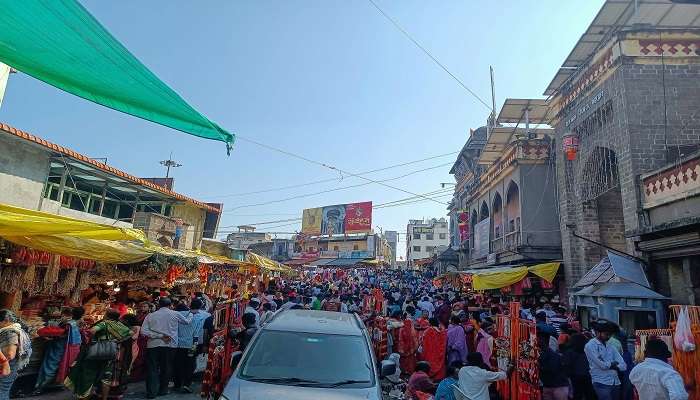
The Tulja Bhavani temple is open year-round. Hence, you can visit it anytime that fits your vacation schedule. However, the most auspicious times to visit are during the Navratri festivals – Shardiya Navratri in the autumn (September-October) and Chaitra Navratri in the spring (March-April). Since the temple is dedicated to Maa Bhavani, a form of Maa Durga, these nine-day festivals witness many devotees from across the country (and outside India) visiting to offer their prayers and seek blessings from the Goddess. The temple lights up on special occasions with decorations, flowers, and lighting. Moreover, the temple hosts special prayers, aartis and ceremonies. Hence, it invites you to have a rich experience.
About Tulja Bhavani Temple
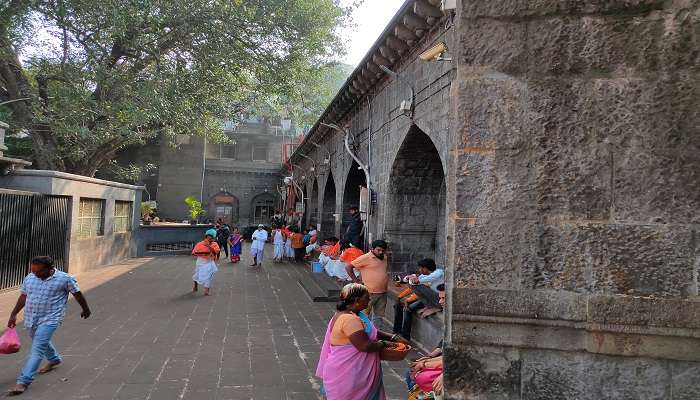
Before embarking on your journey to explore the Tulja Bhavani Temple, you should be aware of its vital information. Having this knowledge, you can navigate the temple seamlessly.
Timings
The Tulja Bhavani Temple is open from 10:00 a.m. to 06:00 p.m. Special aartis occur at specific times. The temple’s highlight is its online broadcasting. You can stream the aartis and special ceremonies during Navratri directly on television channels and the Jio TV network.
Entrance Fees
There are no entrance fees applicable for entering the Tulja Bhavani temple. The lines are usually long, so you might have to stand for hours. However, darshan tickets are available to visitors, which include a free darshan pass and a denagi (donation) darshan pass. You can easily find tickets on the official website and book them for your loved ones and yourself.
Etiquettes and Rules
Maintain silence and reverence while inside the temple complex. Photography is strictly prohibited in certain temple parts, including the sanctum sanctorum (holy place of the Goddess). You can put your mobile device on silent or turn it off before entering the temple premises.
Suggested Read: Weekend Getaways From Mumbai
What to Do In Tulja Bhavani Temple?
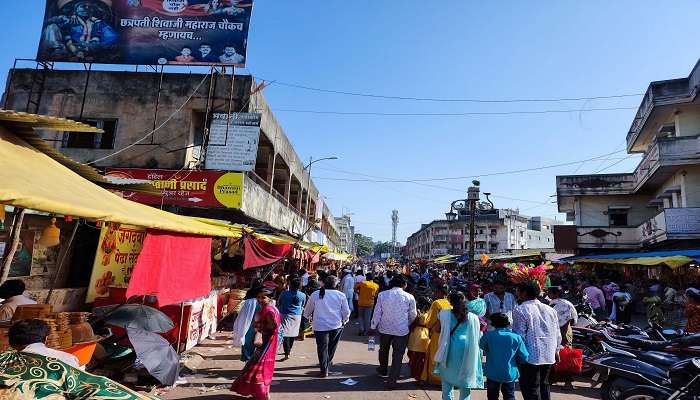
The history of the Tulja Bhavani Temple is well displayed inside it. Besides offering your prayers to Mata Bhavani, you can indulge in various things. You can sit, relax and rejuvenate inside the temple premises or explore the intricate architecture, carved onto each wall. Following are a few activities you can prioritise as you step into the divine haven:
Witness Majestic Murti
The heart of the Tulja Bhavani Temple lies in the ‘holy place’, where the awe-inspiring black stone idol of Goddess Bhavani lies. The deity’s beauty is captivating, and the three-eyed goddess is adorned with a magnificent nose ring, flowers, and an embroidered red chunri. The murti exudes an aura of strength and compassion.
A Walk Through History
The temple complex itself is a testament to architectural brilliance. The intricately carved pillars, the magnificent gopuram (gateway tower), and the serene atmosphere create a truly immersive experience. Take your time to observe each wall, converse with the locals, and live through each tale that entwines the temple’s history.
Witness Aarti Ceremony
The daily aarti, or the prayer ritual, is conducted every evening with utmost devotion. The mix of the chants of hymns and mantras and the clanging of the bells fill the air. It creates an unforgettable and uplifting experience.
Highlights
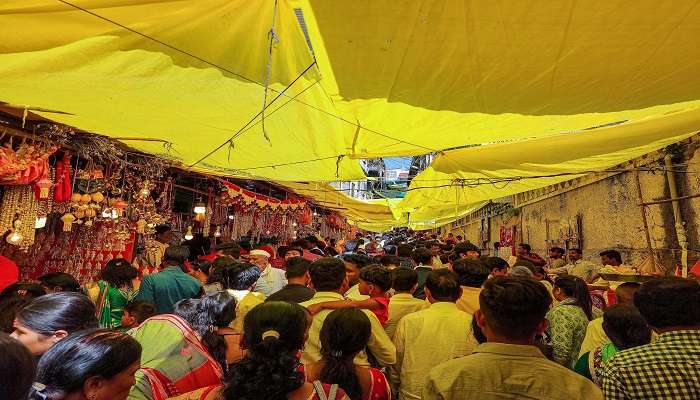
Tulja Bhavani Temple is renowned for several noteworthy features that captivate the hearts of devotees and visitors alike. On your next visit, make a note of exploring the following highlights of the temple:
- The main deity, Goddess Bhavani, is believed to have manifested herself in the form of a swayambhu idol, radiating divine energy and blessings.
- The temple’s history is quite prominent in the Maratha folklore. It was patronised by Maratha rulers, like Shivaji Maharaj. Remember to get a closer look into the temple’s history.
- Grand celebrations are held during festivals like Navratri, Dussehra, and Diwali. Although the crowd is insane during these periods, the aura and experience are entirely different and worth a visit at least once in your lifetime.
Suggested Read: Best Resorts In Panchgani
Places To Visit Around Tulja Bhavani Temple
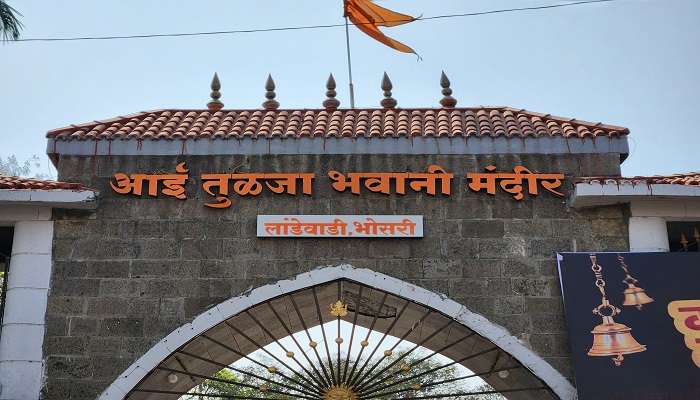
What do you do after you are done exploring the temple premises? Tuljapur offers a few other tourist attractions besides the temple that you should check out.
1. Naldurg Fort
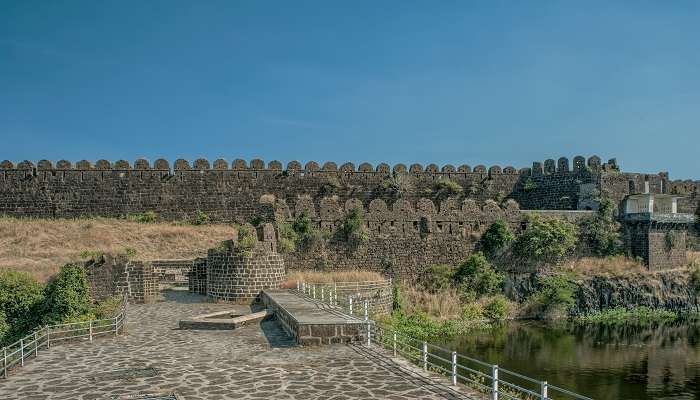
Located 35 km from Tuljapur, the fort was built by a Hindu Raja during the Chalukya Kings of Kalyani rule. Following its initial construction, the Bahamas took over the fort, followed by the Adil Shahi Kings of Bijapur.
2. Solapur
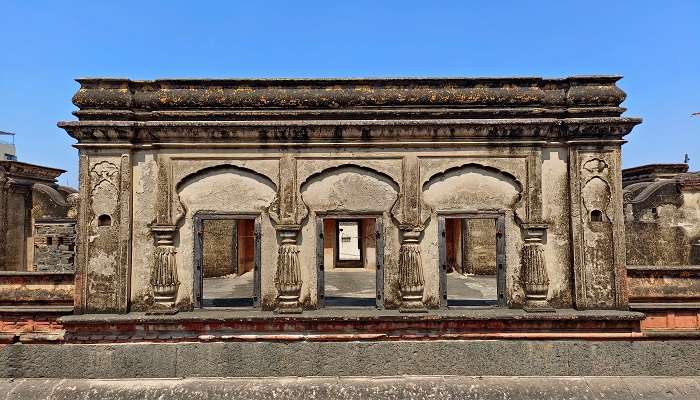
Located 45 km from Tuljapur, Solapur offers more pilgrimage sites like the Siddheshwar Temple. You should also check out the rich textile industries in the town.
3. Ghat Shila Temple
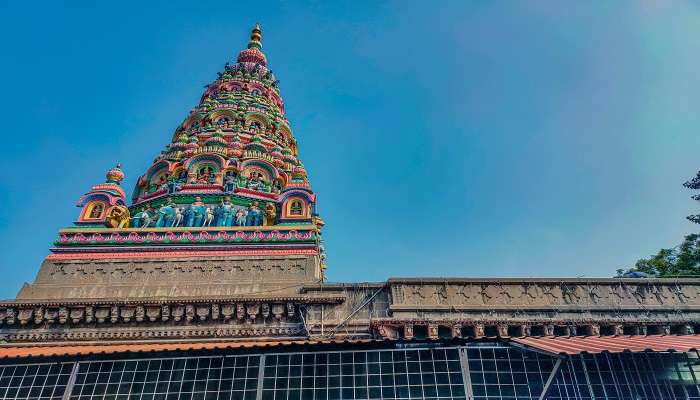
.
The temple is located one kilometre from the Tulja Bhavani and holds mythological significance. Legends depict that Lord Rama and Brother Laxmann explored around the ‘shila’ or rocks near the Ghats of this temple while searching for Mata Sita. The Goddess Tulja Bhavani guided Lord Rama towards Lanka where Maa Sita was held captive.
You should plan your trips based on the Tulja Bhavani Temple darshan timings. You can check the official website for the latest updates and keep posted on upcoming events.
How To Reach?
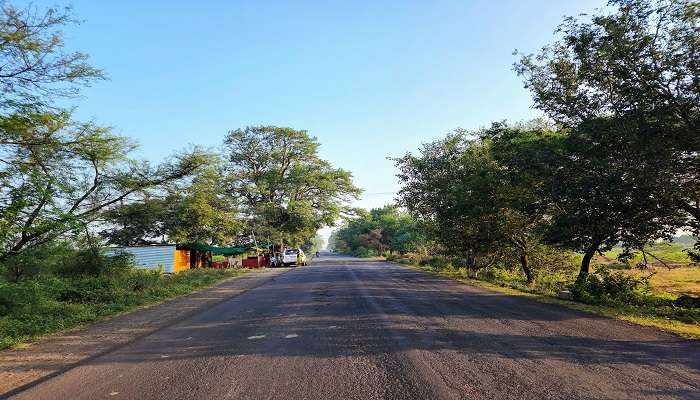
Tulja Bhavani Temple is conveniently accessible by various modes of transportation.
By Air: Two nearby airports are accessible from Tuljapur – Pune and Kolhapur. Once you reach any of these airports, you can take a bus, rental car or taxi to the temple.
By Train: Tuljapur has a railway station that is well-connected to major cities in Maharashtra.
By Road: Tuljapur is well connected by roads to major cities in Maharashtra and neighbouring states. State Transport buses and private taxis ply regularly to Tuljapur.
Further Read: Places To Visit In Maharashtra In Summer
The Tulja Bhavani Temple is more than just a place of worship; it’s a cultural and historical landmark that resonates with the spirit of Maharashtra. The next time you plan your trip to Mumbai, take some time off your busy routine to seek blessings from Maa Bhavani at the Tulja Bhavani Temple.
For our editorial codes of conduct and copyright disclaimer, please click here.
Cover Image Source: Shutterstock
Frequently Asked Questions About Tulja Bhavani Temple
What are the accommodation options near the temple?
You can find different accommodation options, from budget-friendly hotels to comfortable guest houses and luxurious resorts.
Are there any special pujas or ceremonies performed at the temple?
Yes, several special pujas and ceremonies are performed throughout the year. Some notable ones include the Abhisheka (holy bath) rituals performed on specific days and the annual Mahotsav festival.
Is food available near the temple?
Numerous food stalls and restaurants are available near the temple. These offer pure vegetarian Maharashtrian cuisine.
Are there any festivals specific to the Tulja Bhavani Temple?
The Tulja Bhavani festival, conducted during the Navratri period, happens twice a year. The celebrations are grand and thousands of devotees visit the temple during that time.
Is photography allowed inside Tulja Bhavani Temple?
Photography is prohibited in certain parts of the temple, especially around the sanctum sanctorum or where Maa Bhavani resides inside the temple.
People Also Read:
People Also Read:
Meenakshi Temple Wat Rong Khun Man Mo Temple

Experience the world through captivating stories of adventure and travel. As a senior content writer, I bring my passion for exploration to life, crafting tales that take you on a journey. With my words, you’ll feel the thrill of discovery and the joy of experiencing new cultures. Let me turn your imagination into a reality with stories that inspire you to explore and embrace the world.











